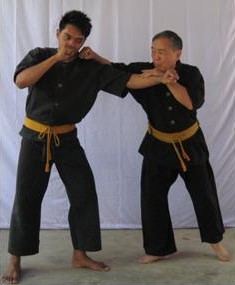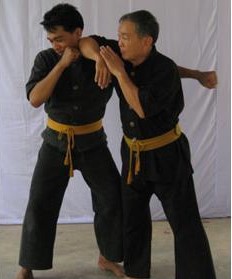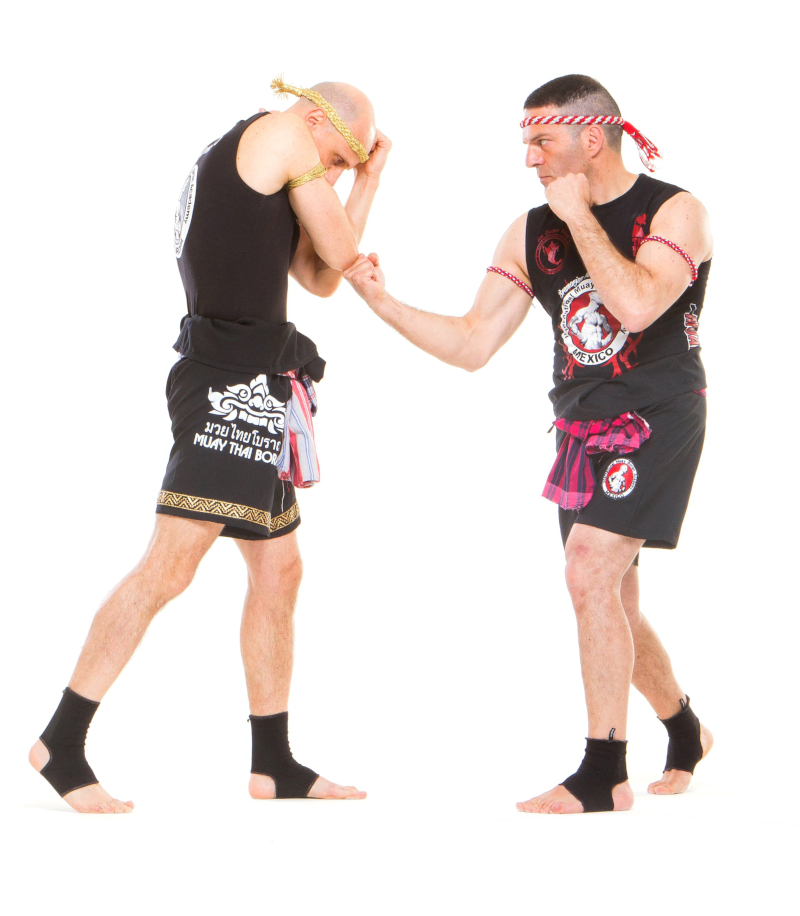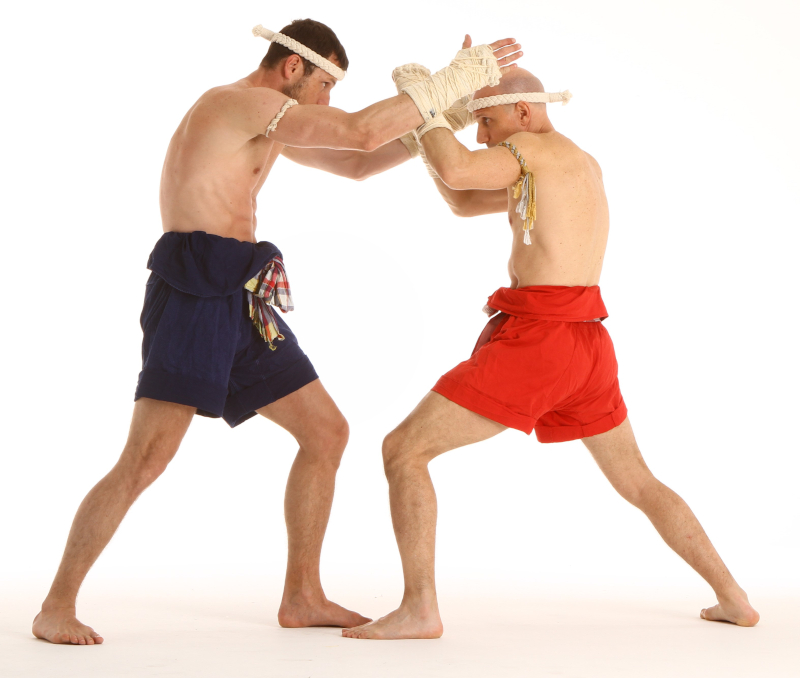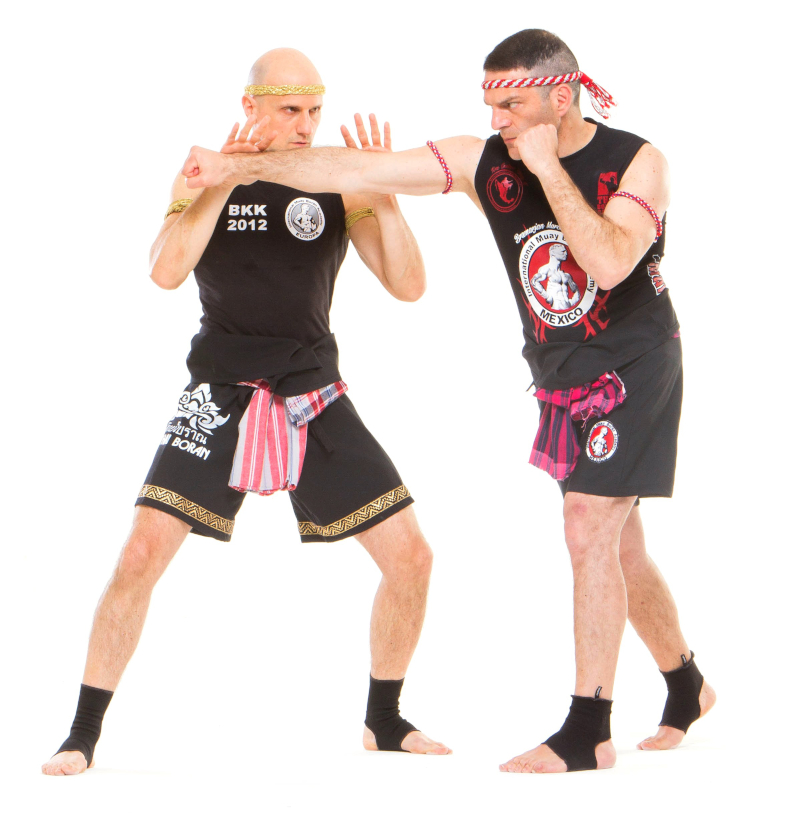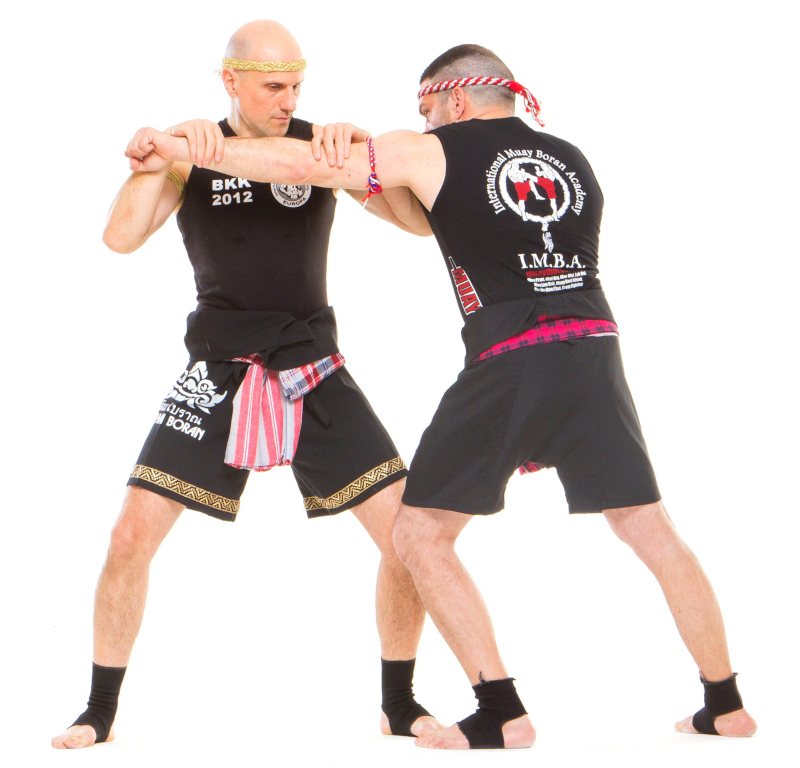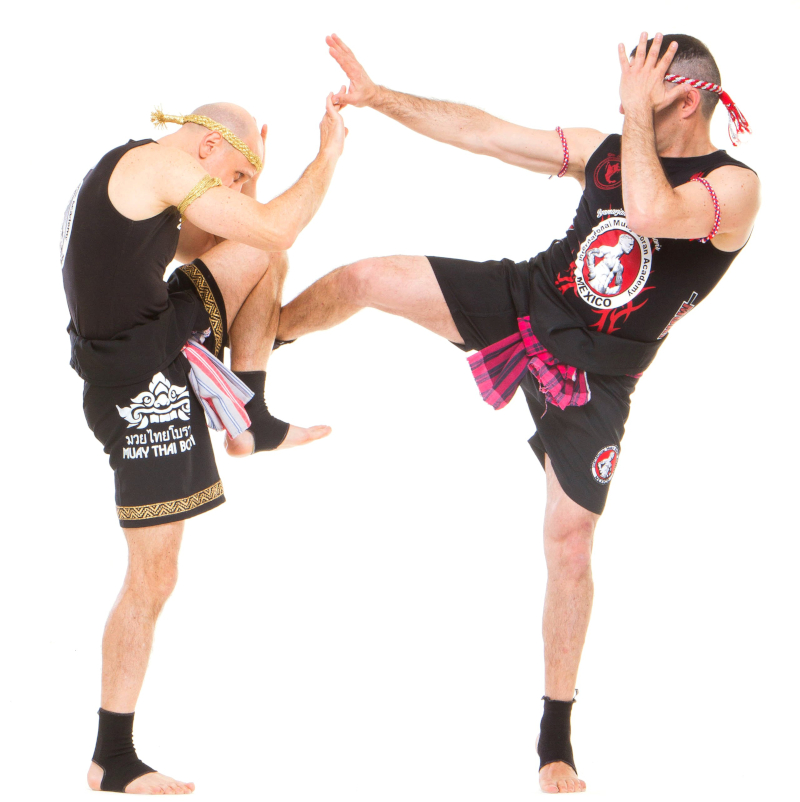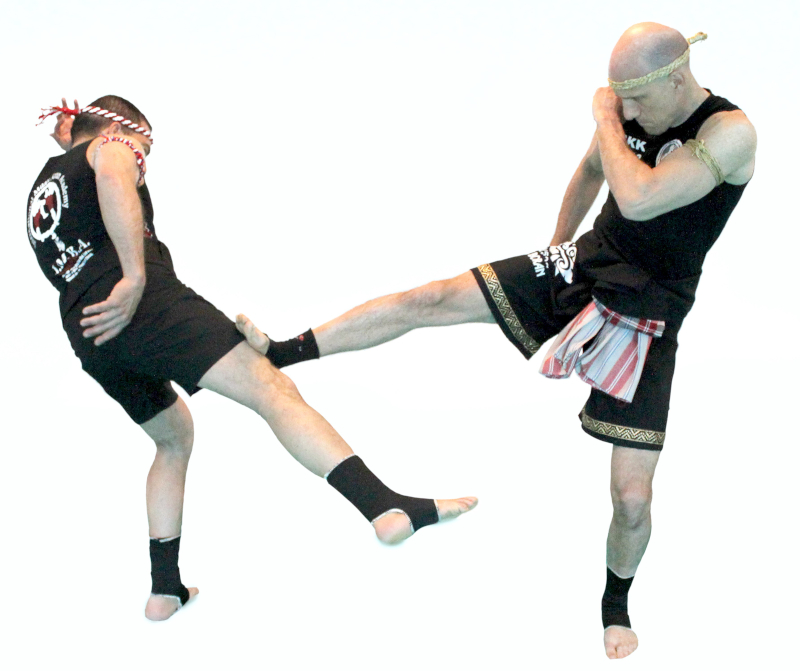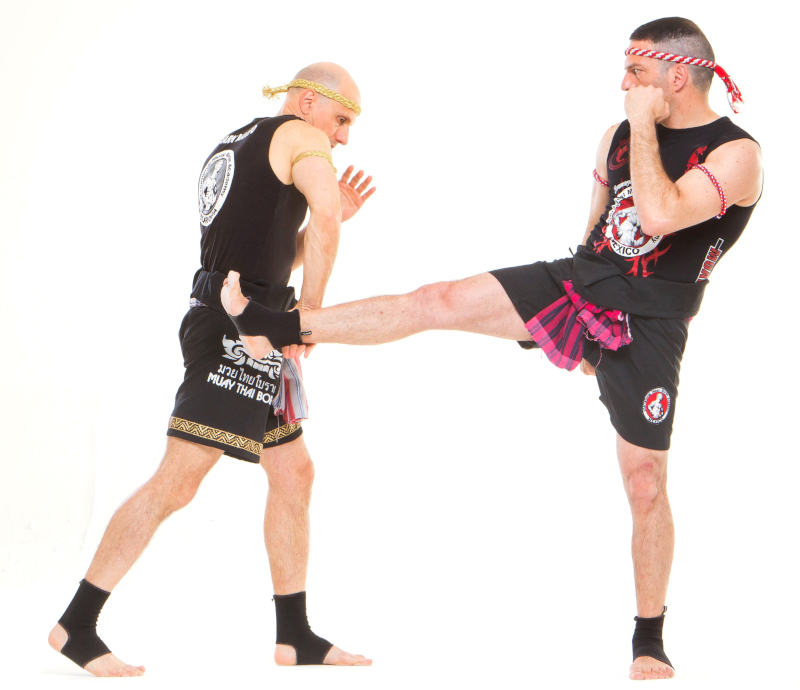
The wisdom of Muay Chaisawat defensive system.
By Marco De Cesaris
After years of practice, research and meditation, Arjarn Chaisawat Tienviboon created one of the most innovative and at the same time traditional styles of Muay. How can a style be modern and traditional at the same time? The problem can be solved easily if the founder of that style has been studying Muay for 60 years and is a living bridge between the ancient ways and the modern professional sport. In fact, Arjarn Chaisawat went through a learning process that started with the last icons of the old systems of Muay and proceeded in parallel with growth of the new born combat sport called (Professional) Muay Thai. While he was researching the roots of his Martial Art, he discovered that Muay and traditional Japanese Bujutsu had some common principles. Those principles helped him to better define the most sophisticated combat strategies and techniques that along the decades had been erased from the technical background of Muay. The result of his lifetime work is an eclectic fighting style that can satisfy even the most sophisticated practitioner of traditional Martial Arts. Some may argue that this system is not 100% Thai. This is very far from the truth. In fact, in the course of his long and systematic research, Arjarn Chaisawat found out that all of the combat principles he learned while studying the Japanese arts were also part of the ancient traditions of Siam. Hard to believe? Not at all, if you consider the long commercial ties that linked Ayutthaya Kingdom and feudal Japan (the Samurai named Yamada is an historic figure that many scholars believe has heavily influenced Thai fencing in Ayutthaya Era).
Muay Chaisawat is a smart style of Muay that Martial Arts lovers cannot but appreciate.
One of the distinctive features of the style is the sophisticated approach to defensive strategy. Some styles tend to rely on soft defensive maneuvers that steal the power of the opponent’s attacks and bounce it back to the offender. Some others, prefer to block the attacks using force to stop force and employing conditioned bony parts to hurt the attacker while blocking a strike. Otherwise, an attack can be stopped before it reaches the intended target thanks to a wise use of the principle of interception. And so on.
Muay Chaisawat defensive strategy is called Lop Lik Pad Pong and includes all of these approaches. Lop Lik refers to the technique of stepping out of the way of the attack. Pad Pong refers to the use of hands and feet to block, parry and redirect in order to control the opponent’s offensive maneuvers. The defensive techniques are a combination of footwork and leg and arm maneuvers.
Moreover, it perfectly blends with the many counterattack tactics of this style (Look Mai Rab), creating a systematic technical background ready to be transferred from teacher to student.
When you want to delve into the complexity of the Thai Art of defensive strategy, you have to understand very well the learning process you have to follow. In Muay Chaisawat there are 2 steps you have to go through for a clear understanding of Lop Lik Pad Pong.
Step one: the student must first learn to detect the 2 core elements of the opponent’s attack:
1.Power source. Knowing how to step into the source of power of strong attacks such as roundhouse kicks and swing punches is crucial for a Nak Muay. In fact, the power or such strikes is minimal near its power source.
2.Direction of force. A skilled fighter knows how to apply a little force to divert the power or the opponent’s strike. An old adage states that “with as little as an ounce (of force) you can defeat 1000 ounces” if you know the path the attack is following.
Step two: once the concepts included in step one have been fully understood and absorbed, the student must start to learn the fundamental 9 strategies of defense.
1.Bien Ben Gaya
2.Kom Bang Satra
3.Korn Berg Fa
4.Salab Fan Pla
5.Paksa Weag Rang
6.Kro Kam Bang
7.Dud Sab Koun Plang
8.Kleun Kratong Fang
9.Hat Wanorn
Let’s analyse the 9 strategies more in details.
1.The strategy in between Lop Lik and the following defensive systems (Pad Pong) is Bien Ben Gaya. This can be applied in emergency situations, when all other defensive maneuvers have failed or if they were not employed with proper timing. A layman way to define this defensive approach is to “roll with the punches”. In a few words, Bien Ben Gaya strategy consists in diverting or declining the force of the opponent’s attack by twisting and turning the body and the head to absorb and divert the power of a strike.
2.The second defensive system refers to the various ways of blocking an attack to the head or face with the use of the palms and the arms. Compared to the first approach Kom Bang Satra is “harder” and implies the use of naturally resistant body parts (the palms, the elbows and the forearms).
3.The third defensive strategy is based on the principle of spreading the opponent’s arms in order to expose his centreline. The typical situation in which Korn Berg Fa is applied is when the opponent tries to get hold of the defender’s neck.
4.The strategy number four combines outside stepping with hand sweeping. In fact, when you apply Salab Fan Pla defensive strategy, you step to the outside of the opponent’s arm (against a punch) or leg (against a kick) and you parry the attack with both hands.
5.The defensive system number five is complementary to the number four. In fact, Paksa Waeg Rang strategy consists in a combination of inside stepping and hand sweeping. When the opponent attacks, you step to the inside of his arm (when he punches) or leg (when he kicks) and simultaneously parry the strike with both hands.
6.Similarly to defensive strategy number 2, Kro Kam Bang consists in blocking an attack with naturally resistant body parts. In this case, the knee is employed to block the opponent’s kicks or knee strikes aimed at the defender’s body.
7.Alternatively to strategy number 6, the palms (heel of the hands) can be employed to block roundhouse kicks, when their use is properly combined with sidestepping and body turning. In Dud Sab Koun Plang after blocking a kick with the hands, the force of the attack is absorbed and “returned to the sender” by pushing back the opponent’s leg.
8.When the opponent’s kicks are aimed at lower targets (the thighs, knees, calves) the defensive strategy of using hard body parts to block the attack comes again into play. In this case Kleun Kratong Fang strategy consists in using the sole of the foot to block low kicks. The defender actually kicks the attacking leg, blending defense and counter in a single action.
9.When the opponent attacks with straight kicks or punches to the body, defensive strategy number nine can be applied. In fact, Hat Wanorn consists in parrying the attack from the inside or from the outside with the palm of one hand. If the parry is executed with proper timing, the attack will be diverted and the opponent’s balance will be broken, opening his defences to a number of possible counterattacks.
Muay Thai Chaisawat: #smart Muay for smart people


